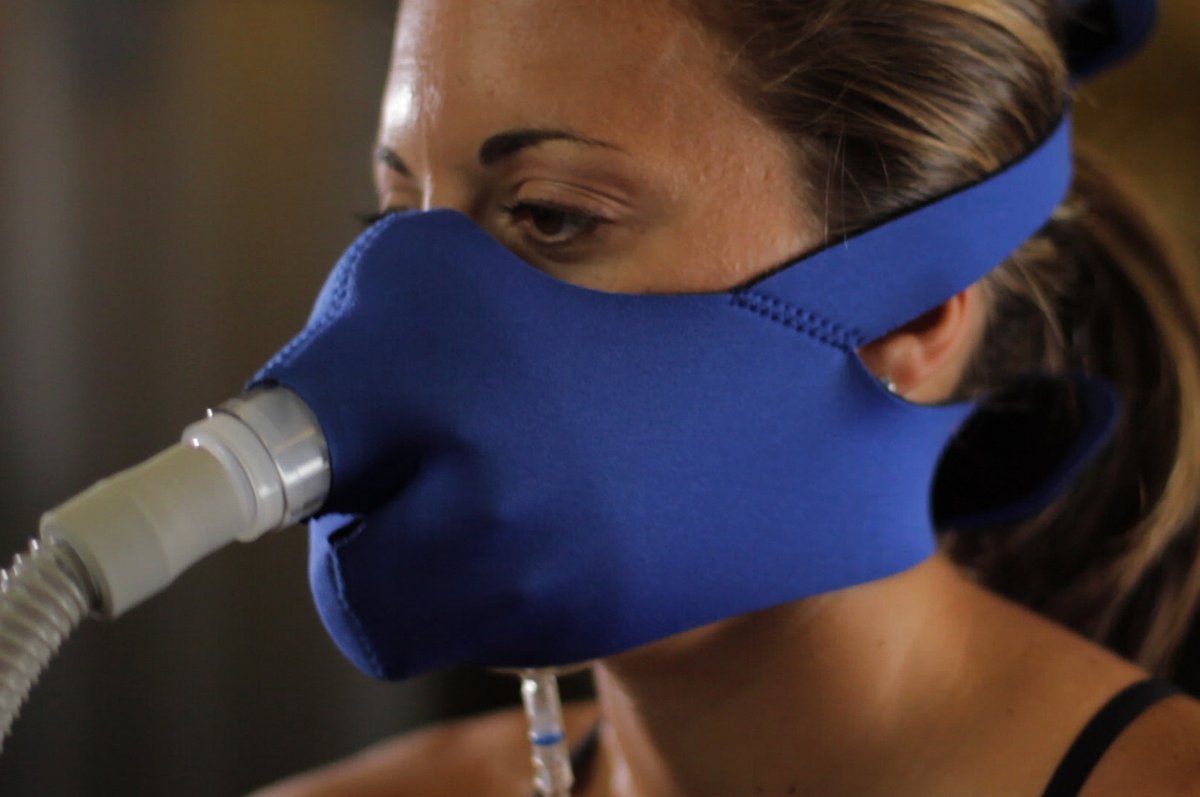Namiot Hipoksyczny
Przebywanie w namiocie hipoksycznym przede wszystkim zwiększa ilość erytrocytów i poprawia transport tlenu we krwi. W literaturze takie rozwiązanie określamy jako model „śpij wysoko- trenuj nisko”, czyli trenujemy z normalnymi intensywnościami a śpimy w warunkach hipoksji. Rozwiązanie to jest szczególnie polecane w dyscyplinach wytrzymałościowych i jako aklimatyzacja górska. Jest to metoda zupełnie legalna i polega na kilkugodzinnym przebywaniu w specjalnym namiocie. Z tego też względu systemu używa się głównie do spania, gdzie łatwo ustawiamy odpowiednik naturalnej wysokości (nawet ponad 6000m npm.). Po 2-3 tygodniach widać pierwsze rezultaty działania hipoksji m.in. w postaci zwiększenia ilości hemoglobiny i pojawienia się we krwi młodych erytrocytów. Aby uzyskać pełnię możliwości należy dodatkowo kontrolować podczas snu saturację krwi (wysycenie tlenem krwi) co pozwala odpowiednio ustawiać generator.
Ważną zaletą takiego rozwiązania jest to, że sportowcy nie muszą rezygnować z dotychczasowej intensywności treningu co jest konieczne, kiedy trenuje się i jednocześnie śpi na wysokości (tzw. model śpij i trenuj wysoko). Z tego względu zdecydowanie minimalizujemy ryzyko przetrenowania.
Stosując namiot hipoksyczny zyskujemy:
- Poprawę właściwości transportowych tlenu
- Naturalna produkcja EPO przez nerki i wzrost ilości hemoglobiny- „legalny doping krwi”
- Adaptację do warunków wysokogórskich (nawet do 6400m npm.)
- Mniejsze ryzyko przetrenowania, utraty masy mięśniowej, spadku odporności
- Poprawę produkcji energii w mitochondriach mięśniowych
- Poprawę metabolizmu tłuszczy i ochrony antyoksydacyjnej
- Utrzymanie wydolności w okresie roztrenowania czy kontuzji!
Metoda live high- train low ma udokumentowane podłoże naukowe, przykładowe badania znajdują się poniżej:
„The results showed that both boys and girls cross-country skiers, significantly improved their sea level VO2max after 21 days of living at moderate altitude and training near sea level. The present study demonstrates that living at moderate altitude, 1550-2050 m and training low, near sea level (450-500 m) significantly increases VO2max and RBC mass for both boys and girls. Results indicate that applying the training concept „living high – training low” in adolescent athletes may improve their endurance performance.”
„Living high – training low” vs. „living high – training high”: erythropoietic responses and performance of adolescent cross-country skiers. Christoulas K1, Karamouzis M, Mandroukas K. J Sports Med Phys Fitness. 2011 Mar;51(1):74-81. http://www.ncbi.nlm.nih.gov/pubmed/21297566
Acclimatization to moderate high altitude accompanied by training at low altitude (living high-training low) has been shown to improve sea level endurance performance in accomplished, but not elite, runners. To answer this question, we studied 14 elite men and 8 elite women before and after 27 days of living at 2,500 m while performing high-intensity training at 1,250 m. Sea level 3,000-m time trial performance was significantly improved by 1.1% (95% confidence limits 0.3-1.9%). One-third of the athletes achieved personal best times for the distance after the altitude training camp. The improvement in running performance was accompanied by a 3% improvement in maximal oxygen uptake (72.1 +/- 1.5 to 74.4 +/- 1.5 ml x kg(-1) x min(-1)). Circulating erythropoietin levels were near double initial sea level values 20 h after ascent (8.5 +/- 0.5 to 16.2 +/- 1.0 IU/ml). We conclude that 4 wk of acclimatization to moderate altitude, accompanied by high-intensity training at low altitude, improves sea level endurance performance even in elite runners.
„Living high-training low” altitude training improves sea level performance in male and female elite runners. Stray-Gundersen J1, Chapman RF, Levine BD. J Appl Physiol (1985). 2001 Sep;91(3):1113-20. http://www.ncbi.nlm.nih.gov/pubmed/11509506
„An altitude group (AG) of 10 Swiss national team orienteers (5 men and 5 women) lived at 2,500 m (18 h per day) and trained at 1,800 and 1,000 m above sea level for 24 days. The AG increased Hbmass whereas there was no change for the CG. Serum erythropoietin, reticulocytes, transferrin, soluble transferrin receptor, and hematocrit increased, whereas ferritin decreased in the AG. These changes were associated with an increased maximal oxygen uptake and improved 5,000-m running times from pre- to postaltitude. Living at 2,500 m and training at lower altitudes for 24 days increases Hbmass and RCV. These changes may contribute to enhance performance of elite endurance athletes”
Live high-train low for 24 days increases hemoglobin mass and red cell volume in elite endurance athletes. Wehrlin JP1, Zuest P, Hallén J, Marti B. J Appl Physiol 2006 Jun;100(6):1938-45. http://www.ncbi.nlm.nih.gov/pubmed/16497842
Sea-level exercise performance following adaptation to hypoxia: a meta-analysis. Bonetti DL1, Hopkins WG. Sports Med. 2009;39(2):107-27. http://www.ncbi.nlm.nih.gov/pubmed/19203133
Skontaktuj się z nami
Tel. +48 570-580-580
kontakt@sportslab.pl














